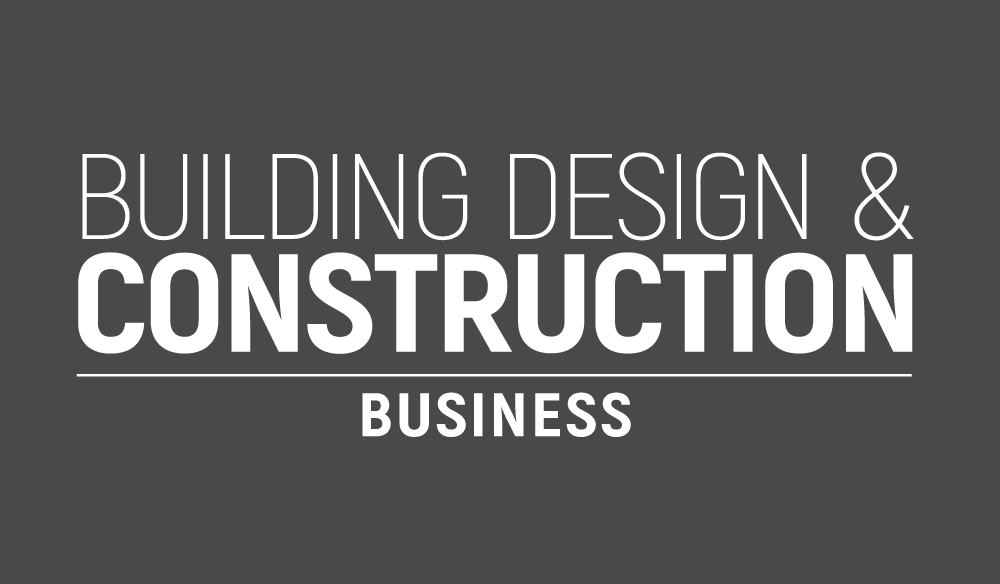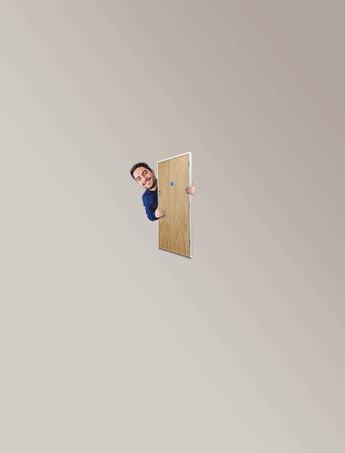Education is constantly evolving, and the exciting potential of immersive learning spaces is at the forefront of this transformation.
Two UK colleges have taken a bold leap into this future by partnering with WindsorPatania to turn vision into reality. Eastern Education Group, with its state-of-the-art XR Lab, and USP College, with its trailblazing USP Immersive Theatre, both spaces were designed to challenge the norms of traditional teaching and deliver deeply engaging, real-world-ready learning environments.
Designing the Future with USP College

At USP College, the goal was ambitious: to build a flexible immersive theatre that could seamlessly incorporate VR and provide an experience far beyond conventional classrooms’ limits.

In an interview with Dan Pearson, USP College CEO, he quoted saying “we have a vision of what we want the space to be able to do. A strategic vision about… future purpose and ensure we stay ahead of time. We knew that the architects that we chose have to be somebody that deliver, someone that can come and give it the wow factor.”

WindsorPatania Architects was the chosen entity and led the charge from day one. “Design information was presented in a format that enabled both the client and building user to easily understand how the physical space was going to be utilised,” said John Blundell (MCIOB) from TJEvers. This early alignment helped everyone involved see the vision.
As the Architect Director of this project, my main challenge, as usual, is to keep everything together. All these orders, requests, as well as the budget constraints, the timeline. And we’re really pleased to say that we managed to achieve our great results.”
The team tackled key design requirements such as adaptability, future-proofing, and ease of use well before construction. Their early involvement ensured that the physical environment would serve the evolving needs of students and staff alike.
Our Development Director, Ryan Windsor notes that when we’re thinking about what we’re doing to the space and how we’re gonna transform it, we often think about assets. We want to create an asset for the College or Universities. We want to inspire the students.
James McInroy, USP College Executive Director shared that- “What we’ve done is… provided brand-new facilities which are modern, state-of-the-art, and conducive with the current climate and reflect the external employment environment.”
One of the most significant breakthroughs came from how the people involved used VR during the design phase. “The ability of the VR technology to quickly model on ‘Site Survey’ and ‘As Built’ information greatly assisted design change, coordination of M&E services, and installation of FF&E elements,” Blundell added.
Despite the project’s technical complexity, the group completed the immersive theatre fit-out in 12 weeks—a testament to Windsor Patania Architects streamlined design and integration process.
Chris Murgatroyd, USP College Vice Principal Academic added, “previously, the space was drab, it was old, it was tired, it was slightly depressing to walk into.”
WindsorPatania Architects’ task was to come in and build that wow factor. We decided to go for a really minimalistic look for everything, such as old tribunes, the sitting area, the monitor, and we just decided to emphasize the ceiling as the main feature of the space.
Dan Pearson commented that -” the transformation was outstanding”. After seeing the complete transformation of the spaces. While Chris Murgatroyd added a compliment as “Now, when we come into the area, it’s engaging, and it’s exciting.”
Steven Hendy, USP College CFO, expresses his desire to have an environment that is available to all USP College students. He is proud that the investment has paid off.
When you design a beautiful space with a wow factor, you also have to think about how you get to the space from outside. So, in the case of the immersive theatre, we found the opportunity to create feature corridors, like a portal that leads you to a new dimension. As you’re walking into the new space, you feel like something beautiful is going to happen. And as you open the doors and enter, your expectations are fully satisfied as you see a stunning masterpiece bought together by a collaboration of experts with a feature of a delicate and illuminated ceiling which highlights the area.
The main aspect of the T-level labs to make them successful as a design was to channel all the requests and the brief from the college itself into a functional layout.
Creating Connection with The XR Lab

At Eastern Education Group, the vision was clear: build a space that removes the barrier of geography and brings education closer to the real world. The result was the XR Lab—an immersive environment where students don’t just learn about their subjects, but they live them.
Learners can use the XR Lab in a wide range of subjects: health, counselling, chemistry, engineering, renewables, maths, logistics, and more. “There are so many examples,” Tom Lloyd shared. Every Friday, our health and applied science students come into study using a specific piece of software that our team has created.”
Staff also receive training and hands-on support. “As part of every personal development day, all staff get the chance to work and better understand the capabilities of the XR lab,” Tom Lloyd said. “The XR team are [sic] available to offer significant support to them every time they want to use the new technology.”
Designing this space meant considering how students of all learning styles and abilities would interact with the technology. Ethical use, community engagement, and preferred learning styles were all factored into WindsorPatania’s thoughtful and inclusive design approach.

“We wanted to create a cutting-edge space that would remove the barrier of geography and close the gap between industry and education,” said Tom Lloyd from Eastern Education Group.
The impact has been transformational. “It increases engagement in our experience. It also stimulates excitement to learn and supports knowledge and skill acquisition. The data captured backs this up,” Tom Lloyd added. The immersive nature of the lab boosts student motivation, and early data trends point to better learning outcomes than traditional methods.
A transformative learning space

Immersive learning spaces like the XR Lab and USP Immersive Theatre are transforming education. Here’s how:
1. Increased Student Engagement
When students can interact with lessons (walk through a historical battle, explore the human body, or test engineering principles in real time), they become active participants. There is no forced engagement; it flows naturally from the experience. “It also stimulates excitement to learn,” shared Tom Lloyd.
Chris Murgatroyd shared that “Now, when we come into the area, it’s engaging, and it’s exciting.”
2. Improved Knowledge Retention
Immersive environments support more profound understanding and longer-lasting retention. Virtual simulations help students apply what they learn rather than memorise it. “It supports knowledge and skill acquisition,” Tom Lloyd said, highlighting how XR learning aligns well with competency-based education.
For the USP College, Chris Murgatroyd quoted that “It was really a dynamic, an immersive, a collaborative, and active learning space.”
3. Real-World Skills, Built In
These spaces simulate professional environments—healthcare rooms, construction sites, even lab conditions—giving students hands-on skills. As Tom Lloyd noted, “The biggest opportunities are being able to transform the way people learn and make their skills more applicable to the real world.”
James McInroy, shared that today, “We’ve provided brand-new facilities which are modern, state-of-the-art, and conducive with the current climate and reflect the external employment environment.”
4. Closer Industry Alignment
The XR Lab aims to close the gap between education and the workforce. Students use the same tech and scenarios they’ll encounter in future careers, making the transition from study to industry smoother and more relevant.
For the USP College, there is “A strategic vision about… future purpose and ensure we stay ahead of time.” Says Dan Pearson.
5. Inclusive and Ethical Learning
Designing with students in mind means thinking beyond the tech. “The key considerations are the ethical use of technology, engagement and additional learning requirement considerations, preferred learning styles, support, and balancing the use of the headset,” said Tom Lloyd. The result is an experience that’s thoughtful, safe, and accessible.
6. Stronger Community Engagement
These spaces aren’t just for college students. “We engage with primary and secondary school students,” Tom Lloyd said. The XR Lab also runs special pilot programmes, like a recent maths initiative with a major awarding organisation, which shows how immersive learning can reach and inspire a wide range of learners.
7. Ongoing Support for Educators
Educators aren’t left to figure it out alone. Through structured training and access to dedicated XR support staff, teachers feel empowered to use the space creatively and effectively.
A Growing Global Movement
Immersive education is now evolving and experiencing a global shift. From adaptation of primary schools to universities, institutions are realising that traditional learning environments often fall short in preparing students for a rapidly changing world. This is where immersive technology steps in to close the gap.
BT Group’s rollout of the UK’s first 5G-powered immersive classroom is a perfect example. By using VR and AR tools to teach subjects like science and history, students were not only more engaged, but they also showed a deeper understanding of complex topics. The pilot study revealed that immersive teaching helps make abstract ideas more tangible, helping students “see the unseen” in a classroom setting.
Similarly, the University of Wales Trinity Saint David uses immersive rooms to create emotionally engaging learning experiences. These spaces enable learners to develop empathy, decision-making, and situational awareness—skills that are difficult to teach through textbooks alone.
At WindsorPatania Architects, this is precisely the value we’re building into every design. The XR Lab and Immersive Theatre aren’t just architectural achievements but catalysts for stronger educational outcomes and richer student experiences.

Designed for the Way Students Learn Today
Modern learners are more visually oriented, more tech-savvy, and more likely to thrive in collaborative environments. Immersive learning spaces are uniquely suited to meet these needs.
A recent report from Loughborough University highlights how immersive engagement encourages active participation and supports inclusive teaching practices. When learners are in the experience, they retain more information, ask better questions, and build stronger connections to the content. This aligns closely with what Tom Lloyd of Eastern Education Group observed: “It increases engagement… it also stimulates excitement to learn and supports knowledge and skill acquisition.”
WindsorPatania Architects approach supports this shift by designing physical spaces that are not only functional but also inspiring and inclusive. That means thoughtful consideration of lighting, acoustics, spatial flow, and accessibility—every element is crafted to support optimal learning.

Built for Flexibility and Future Growth
One of the biggest strengths of immersive environments is their flexibility. Traditional classrooms are often static, but immersive spaces can adapt to new technologies, changing curricular, and evolving student needs.
WindsorPatania Architects designed the XR Lab and USP Immersive Theatre with this adaptability in mind. These spaces are built to grow, whether integrating new software, switching between disciplines, or expanding to accommodate more learners. As John Blundell of TJEvers noted, early coordination and the use of VR modelling made it easier to accommodate design changes on the fly, saving both time and cost during construction.
This future-ready mindset sets WindsorPatania Architects apart. By building flexibility from day one, schools and colleges can continue innovating without rebuilding from scratch.

Why Immersive Learning is Here to Stay
According to BT Business Insights, immersive spaces are already helping institutions boost student outcomes, improve attendance rates, and even enhance teacher satisfaction. With continued investment in VR/AR infrastructure, the aim is to expand these benefits.
A joint study by the University of Bristol and Sparks Bristol highlighted how immersive tools like 360-degree video, spatial audio, and interactive storytelling are helping young people learn in new and emotionally resonant ways. Teachers involved in the project reported higher levels of enthusiasm and confidence among learners, especially those who previously struggled in traditional settings.
This shift isn’t just beneficial—it’s necessary. The workplace is evolving, and schools must keep pace. WindsorPatania’s immersive spaces give students a head starts by simulating real-world scenarios, building industry-specific competencies, and fostering soft skills like collaboration, problem-solving, and digital literacy.

More Than Spaces: The Catalysts for Change
Immersive education is no longer a concept for the future. It’s happening now, and WindsorPatania is proud to help schools and institutions bring this vision to life. From clear, user-centred design to cutting-edge integration and educator support, these projects show what’s possible when architecture and innovation work together.
By shaping spaces that inspire and support learning at every level, WindsorPatania Architects is helping to build a brighter, more connected future—one immersive experience at a time.

Building, Design & Construction Magazine | The Choice of Industry Professionals





